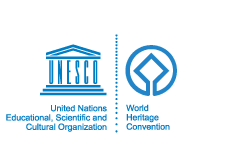Mt. Kumgang and the Historical Relics in and around the Mountain
Korean Cultural Relics Publishing House
Disclaimer
The Secretariat of the United Nations Educational Scientific and Cultural Organization (UNESCO) and the World Heritage Centre do not represent or endorse the accuracy or reliability of any advice, opinion, statement or other information or documentation provided by the States Parties to the World Heritage Convention to the Secretariat of UNESCO or to the World Heritage Centre.
The publication of any such advice, opinion, statement or other information documentation on the World Heritage Centre’s website and/or on working documents also does not imply the expression of any opinion whatsoever on the part of the Secretariat of UNESCO or of the World Heritage Centre concerning the legal status of any country, territory, city or area or of its boundaries.
Property names are listed in the language in which they have been submitted by the State Party
Description
Mt. Kumgang is a strikingly beautiful mountain with numerous peaks and curious rocks amounting to some 1,2000, waterfalls and pools formed by crystal-like clear waters flowing from hundreds of gorges, as well as with the seascape stretched along the coastline. Mt. Kumgang is divided into Inner Kumgang, Outer Kumgang and Sea Kumgang according to its geographical location, every area presenting the unique scenery of its own. Thanks to its natural condition, the mountain shelters various species of plants, ranging from those in Temperate Zone to those in Sub-arctic Zone, of which there are species indigenous to the area, as well as provides a habitat for a great number of animals. Mt. Kumgang is permeated with numerous legends and cultural relics handed over down through generations. Typical are the properties relating Buddhism. Buildings with long history and unique architectural forms such as Jongyang Temple, Pyohun Temple and Podok Hermitage, and Myokilsang, Sambulam and other Buddhist statues carved on the rocks make the scenery of the mountain more beautiful, blending with their natural settings.


 Democratic People's Republic of Korea
Democratic People's Republic of Korea